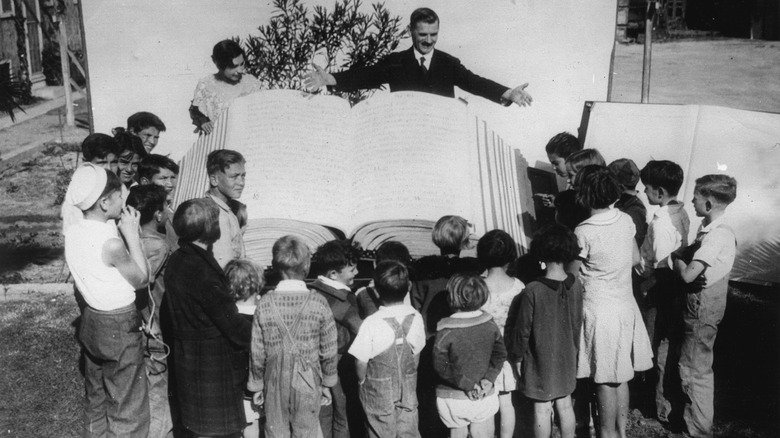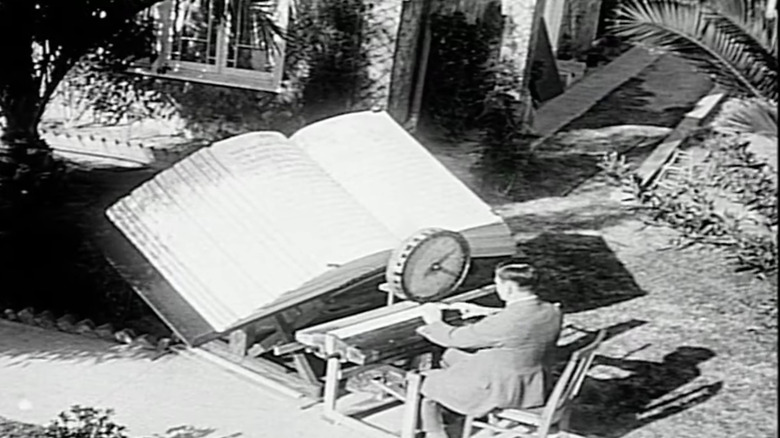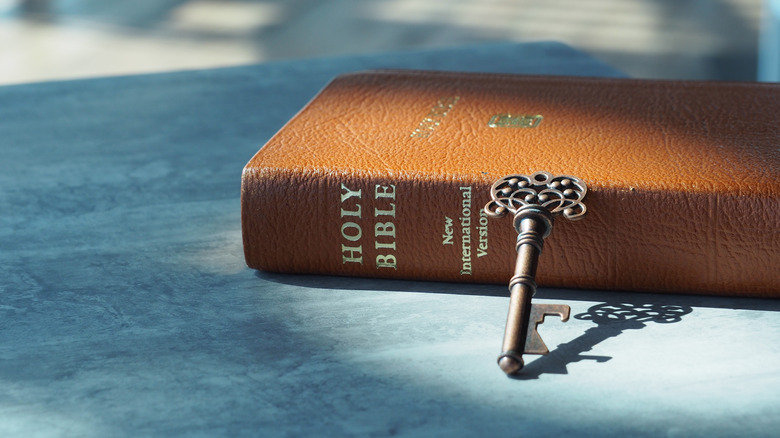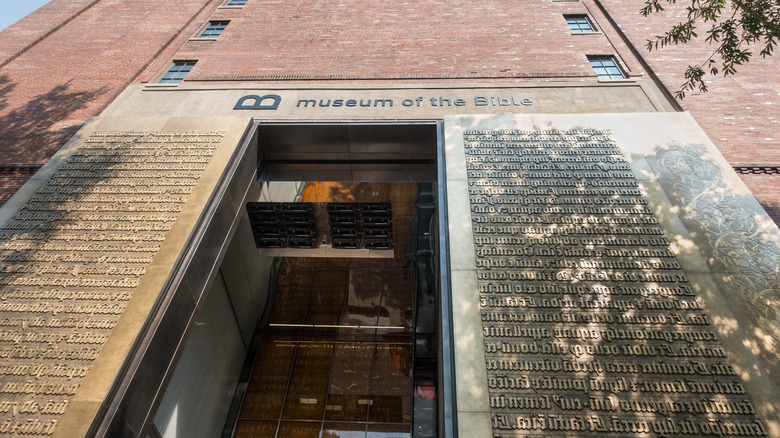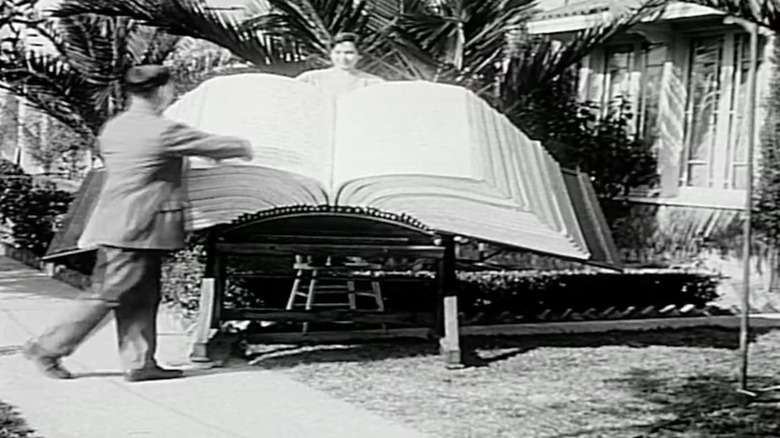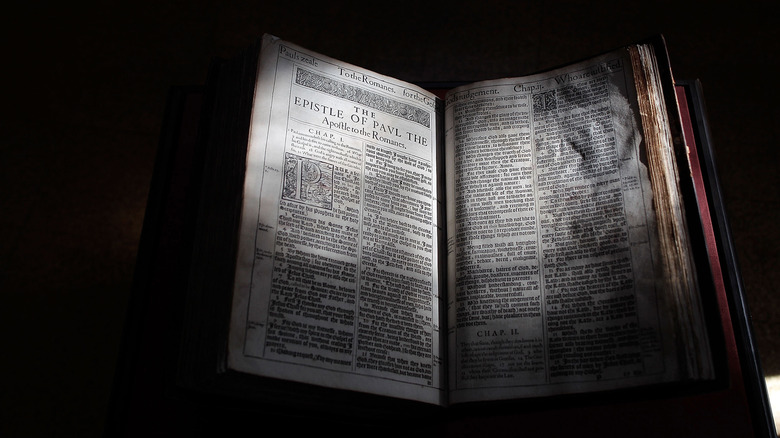The Untold Truth Of The Waynai Bible
There is no shortage of big things in the world. Drive around many parts of the United States and you'll come across the world's most giant ball of twine or a huge plastic duck sitting on the side of the road.
These days, when technology gets smaller and smaller, creating a giant attraction is a sure-fire way to get tourists to stop and pay a nominal fee to gawk at the world's biggest liveable shoe. It's an easy thing to scour the internet for these fun places, but it's rare to find the world's largest useful item. So, have you ever heard of the largest Bible?
That is precisely what you think it is. A Bible exists, in a library, that people can read, but they can't carry it with them, because it's enormous.
The Waynai Bible is believed to be the biggest Bible globally and weighs over a thousand pounds. According to the Abilene Christian University, then volume measures 43.5 inches tall and is 98 inches wide. It has 8,048 pages, so when the Waynai Bible is closed, the spine is 34 inches thick. So yeah, there's no way someone can carry this book outside of the library.
There was a specially-built printer for it
The Waynai Bible is called that for its maker, Louis Waynai. He was an immigrant from Hungary who lived in Los Angeles, said the Abilene Christian University.
Waynai got the idea to create his edition of the Bible in 1926, explained the blog Antikey Chop. He wanted to make the biggest Bible, but knew immediately that a standard printing press would not be able to handle it. At first, he tried to write it out by hand, but he decided on something else. So Waynai, a carpenter by trade, built a hand-operated machine using rubber stamps on a carriage that moved freely. Rollers fed massive amounts of paper through the press while the operator hit a foot pedal to choose the correct character. Finally, he used a handheld pad to ink up the stamps.
The machine was completed in December of 1928. Waynai and his wife toiled for up to two years and finished the Bible on December 1, 1930. It's said that the project cost Waynai $10,000.
It has competition
While the creator of the Waynai Bible said his edition is the largest in the world, there will always be people who disagree. There are many who say the Macklin Bible, even at 16 by 19 inches, is still bigger. Why? Well, it's because this book was printed on a printing press. In that way, it is the largest bible ever published.
The Macklin Bible, constructed by printseller Thomas Macklin, was published in 1800, wrote the Museum of the Bible. Macklin sought financial help to make his Bible and approached many industrial giants of his time. He even got King George III to put in money for his folly.
But Baumann Books said Macklin had copied someone else's idea. Another printseller, John Boydell, commissioned engravings to go with a folio of Shakespeare's work. That book measured 22 by 27 inches.
The Macklin Bible, even if it wasn't wholly an original idea, is beautiful. It featured several engravings of scenes from the Scriptures and came in seven volumes. Altogether, the Macklin Bible weighs over 100 pounds.
A special museum
Since the Waynai Bible is a one-of-a-kind book, it deserves to be displayed in a place to preserve and respect it.
The Optimist reported the Waynai Bible has now been moved for preservation and display to the Museum of the Bible in Washington D.C. Before the museum, the book was kept at the Abilene Christian University's Brown Library, where it was donated in 1956.
After Waynai finished his magnum opus, the Rosen Heights Church of Christ in Fort Worth, Texas, purchased it in 1947. A decade later, the church gave the Bible to the university, where it was on display at one of its library's reading rooms. The Bible Hunter said Abilene sent the Waynai Bible out for restoration in 2013 and allowed it to be part of an exhibit.
The university chose the Bible Museum to continue further restoration activities as the university admitted the book needs constant care. The museum and the university agreed on a cycling exhibit that will see the Waynai Bible return to Texas every few years.
Efficient construction
You might imagine that something as large and heavy as the Waynai Bible would be hard to move around. You would be correct. Just displaying the piece looks like a nightmare. After all, there's probably not a lot of pulpits that can hold a book that weighs 1,094 pounds and is more than 8,000 pages long.
But Waynai had foreseen the difficulty of transporting his colossal book. Since he wanted to share his work with many people, Waynai constructed his edition of the Bible in a way that made traveling with exhibits easier.
Antikey Chop said the Waynai Bible could be separated into 31 detachable sections, so it will be easier to move around. But even with a built-in method for dismantling it, it's not exactly effortless. It takes about 30 minutes to take apart or put back together. Abilene Christian University pointed out that even though the Waynai Bible is now too fragile to read, thanks to its sectional construction, it's traveled several times for display, though with great difficulty.
Beautiful prose
Waynai was a self-ordained minister who felt that he needed to share his faith with others. For him, the best way was to create his bible, based on the King James Bible.
NPR noted the King James version was first published more than 400 years ago. Despite no longer being the best-selling variety of the bible, the King James Bible remains a cultural touchstone. It is considered one of the most poetically written books, which is a feat if you know that the monarch commissioned his bible because he wanted mentions of tyrants scrubbed from it.
The King James Bible inspired composers like Handel, and even Simon and Garfunkel. Its prose has been quoted by political leaders and read pivotal moments in history. These days, more colloquial types of the Bible are more accessible than the high poeticism of the King James version. It's no wonder that Waynai wanted to emulate these beautiful words in his massive Bible.
